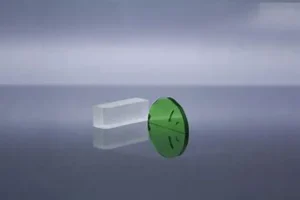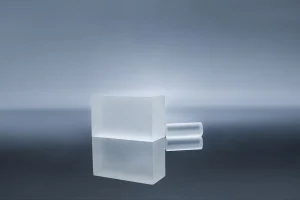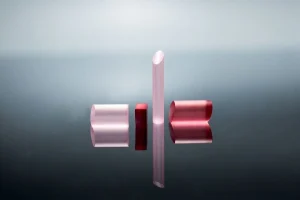The Story of LBO Crystals: What Are They?
Lithium Triborate (LBO) is not just another crystal; it’s a marvel of materials science that pushes the boundaries of nonlinear optics. A crystalline solid with a unique composition of lithium, boron, and oxygen, LBO stands tall with its unmatched characteristics.
What makes LBO special is its combination of a wide transparency range, extending from the ultraviolet to the far infrared, and an exceptionally high damage threshold. The high damage threshold is particularly crucial in many optical applications as it can handle high power lasers without deteriorating or causing device failure.
This incredible pairing of features has led to the widespread usage of LBO in a multitude of optical systems, making it a veritable superstar in the world of nonlinear optics. Indeed, if you delve into the heart of many modern laser systems, you will likely find an LBO crystal working tirelessly, converting and manipulating light with a level of efficiency and stability that is truly awe-inspiring. In a nutshell, LBO is a game-changing nonlinear optical crystal that is indispensable in today’s optical landscape.
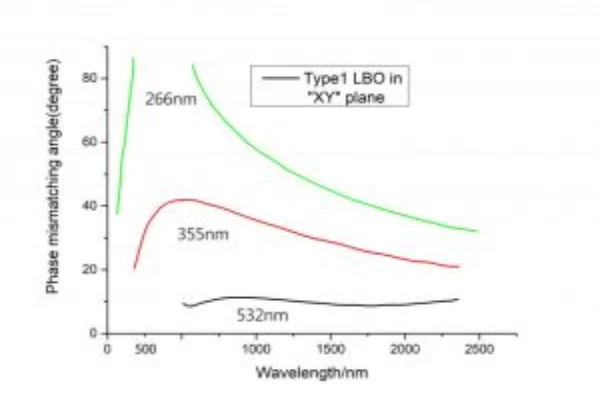
Application Spectrum: Where are LBO Crystals Used?
LBO Crystals have cemented their status as an integral part of the laser industry, contributing significantly to advancements in laser technology. With a high damage threshold and excellent optical homogeneity, LBO Crystals can withstand the high-intensity outputs that are commonplace in high-power laser systems, effectively enabling these systems to perform optimally without risk of damage to their components. But, it’s not just about endurance; these crystals shine brightly in the realm of frequency doubling, one of the most common nonlinear optical processes.
Here, they convert light at one frequency into light at twice the frequency, thereby halving the wavelength. This process is vital in creating lasers of different colors, extending their use to a wide variety of applications. This includes but isn’t limited to medical procedures, laser display systems, optical data storage, and even advanced research. The indispensability of LBO Crystals in these processes has not only spurred the evolution of laser technology, but also revolutionized its applicability, making lasers a common feature in various aspects of our everyday lives.
The Birth of an LBO Crystal: How Are They Manufactured?
The manufacturing process of LBO Crystals is a testament to the heights of scientific innovation. The Flux method, the cornerstone of LBO Crystal manufacturing, is a meticulous process involving a precise blend of raw materials, exacting temperature control, and carefully managed chemical environments. It begins with a well-calibrated mix of lithium, boron, and oxygen in a crucible. This mixture is then exposed to a precisely controlled thermal cycle, inducing the growth of the crystal.
This carefully curated temperature profile ensures that the mixture solidifies in a uniform manner, forming a single crystal structure. A key aspect of the Flux method is the temperature gradient, which has a significant impact on the size and quality of the crystal. Ensuring a stable temperature gradient is crucial for obtaining large, high-quality LBO Crystals. Finally, after the crystal has grown to the desired size, it is harvested, cut, polished, and coated based on its intended application. This rigorous and exacting process results in an LBO Crystal that strikes a perfect balance between size and quality, manifesting the incredible optical properties that these crystals are celebrated for.
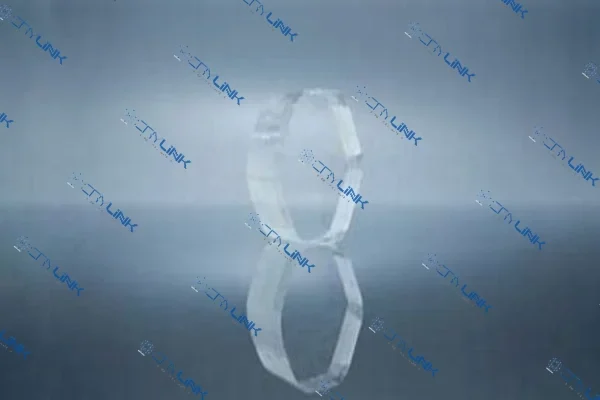
Seeing the Light: What Are the Optical Properties of LBO Crystals?
When it comes to the optical properties of LBO Crystals, they indeed present an impressive portfolio. The wide transparency range, stretching from the deep ultraviolet to far infrared spectrum, enables LBO Crystals to interact with a vast array of laser light sources, amplifying their versatility in different applications. On top of that, the high damage threshold – the ability of LBO Crystals to withstand high-intensity laser beams without compromising their structure or performance – is a much-appreciated quality, especially in high-power laser applications.
Additionally, LBO Crystals boast a large nonlinear coefficient. This trait is vital in nonlinear optical processes such as frequency doubling, where it facilitates efficient conversion of the incident light to a different frequency. Further enriching their optical appeal is the broad acceptance angle. This feature allows for more significant light interaction and minimizes the requirements for beam alignment, simplifying the overall operation.
Last but not least, high optical homogeneity ensures uniform light propagation through the crystal, resulting in better beam quality and fewer distortions. This confluence of exceptional optical properties empowers LBO Crystals to meet and exceed the demands of modern optics, setting the stage for groundbreaking discoveries and innovations in the realm of light.
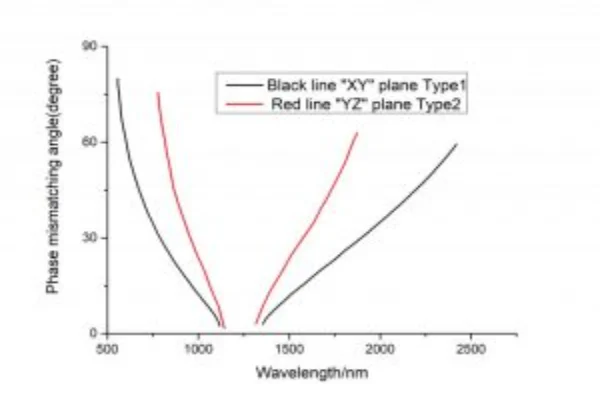
The Crystal Comparison: How Do LBO Crystals Compare to Other Nonlinear Optical Crystals?
When stacked up against other nonlinear optical crystals, LBO Crystals unmistakably hold their ground. Their broad transparency range is a distinctive trait that surpasses most other crystals in the field. This wide range empowers them to interact with diverse laser sources, opening up a broad spectrum of applications across various scientific and industrial sectors.
Another remarkable trait is their high damage threshold. Many optical systems, especially those involving high-power lasers, demand crystals that can withstand intense energy levels. Here, LBO Crystals truly shine. Their ability to tolerate high-intensity laser outputs without sustaining damage or degradation is a formidable advantage, making them a top choice for high-power applications. Furthermore, LBO Crystals exhibit large acceptance and smaller walk-off angles.
These characteristics minimize the alignment sensitivity of the optical system and ensure better beam propagation. The less stringent alignment requirements and better beam quality conferred by these features often tip the scale in favor of LBO Crystals over other nonlinear optical crystals. In sum, the unique blend of performance and durability that LBO Crystals offer set them apart in the world of nonlinear optics.
Making the Right Choice: How to Select the Correct Nonlinear Optical Crystal for Your Application?
Choosing the right nonlinear optical crystal, including LBO, is a crucial step towards the success of your application. The process, however, involves careful evaluation of several key factors. Firstly, the size of the crystal plays a pivotal role. A larger crystal can accommodate higher power levels, making it suitable for high-power applications.
The acceptance angle of the crystal is another key determinant. A crystal with a larger acceptance angle, like LBO, requires less precise alignment, making it easier to integrate into your system. The damage threshold of the crystal is equally important, particularly in high-power laser systems. A high damage threshold, as seen in LBO Crystals, enables the crystal to withstand intense light without sustaining damage, enhancing the longevity and reliability of your optical setup. Moreover, the nature of your laser system is a crucial factor.
You need to consider the wavelength and power of your laser source and choose a crystal that is transparent at the given wavelength and can withstand the laser power. Lastly, other factors such as the thermal stability, optical homogeneity, and nonlinear optical coefficient of the crystal also need to be considered. All these elements together influence the performance and efficiency of your optical system, making the selection of the right nonlinear optical crystal a decisive step towards the successful realization of your application.
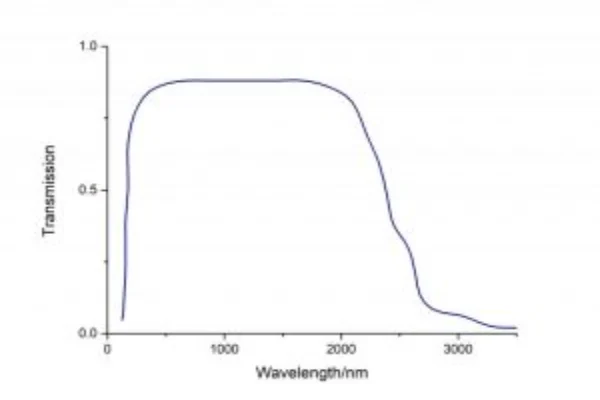
Laser and Light: What is the Application of LBO Crystals in Laser Technology?
LBO Crystals hold a prestigious position in laser technology, finding their use in a myriad of applications that shape the future of lasers and light. Often referred to as the heart of high power lasers, LBO Crystals play an instrumental role in the intricate workings of these laser systems. They enable these high power systems to achieve their peak performance while ensuring durability, thanks to their high damage threshold.
One of the most common applications is frequency doubling, where LBO Crystals efficiently convert the frequency of a high power laser, effectively halving the wavelength and opening up a spectrum of possibilities for laser applications. In addition, LBO Crystals have made substantial contributions to the realm of optical parametric oscillation, a process vital for generating tunable light sources. Here, they serve as a platform for the incident light to generate two new light beams, each carrying different frequencies.
Moreover, sum-frequency mixing, a process that combines two different frequencies to generate a new frequency, also heavily relies on LBO Crystals. This process is crucial for creating various colors of laser light, broadening the horizons for laser displays, medical applications, and more. Overall, the integration of LBO Crystals into laser technology has pushed the boundaries of what we can achieve with light, lighting the path towards a brighter, more illuminated future.
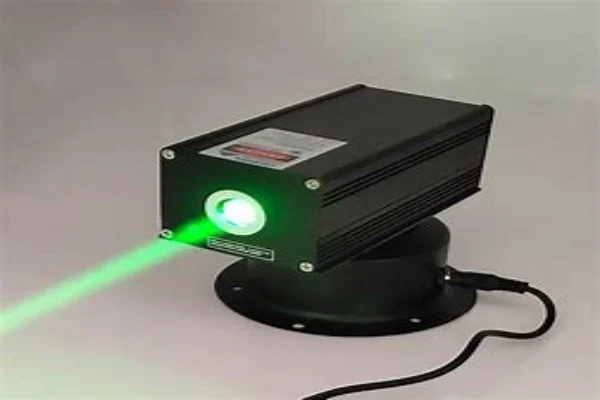
Feeling the Heat: What is the Thermal Stability of LBO Crystals?
LBO Crystals are distinguished by their exceptional thermal stability – a quality that sets them apart and makes them indispensable in many optical systems. Especially when dealing with high-power lasers, thermal stability is of the essence. Laser systems generate considerable heat, and without proper thermal resistance, a crystal may degrade or even fail. But LBO Crystals stand firm.
They can endure substantial heat without any significant performance loss, ensuring that your optical system remains reliable and efficient even in demanding scenarios. Beyond high power lasers, this thermal stability extends LBO Crystals’ applicability to a wide array of environments with varying temperature conditions.
Whether it’s a low-temperature scientific experiment or a high-temperature industrial process, you can count on LBO Crystals to deliver consistent performance. Their ability to maintain their nonlinear optical properties across a wide temperature range further augments their versatility.
This resistance to thermal effects is achieved thanks to their unique crystal structure, which remains stable and unchanged even under significant thermal stress. In essence, the thermal stability of LBO Crystals is a testament to their resilience and reliability, making them a favorite among scientists and engineers around the globe.
Optimal Operation: Under What Conditions Are LBO Crystals Most Stable?
LBO Crystals maintain their stability under a variety of conditions, demonstrating their versatility and resilience. However, their optimal performance is often achieved under certain temperature and pressure parameters. These conditions, however, aren’t set in stone and largely depend on the intended application of the crystal and the intricacies of the laser system design. Generally, in terms of temperature,
LBO Crystals exhibit high thermal stability and continue to function efficiently over a wide temperature range. This broad range allows for flexible system design and ensures that the crystal performance is not compromised, even under fluctuating temperature conditions. In the context of pressure, LBO Crystals are typically used under ambient pressure conditions in most optical applications. They retain their structural integrity and optical properties under these conditions, ensuring reliable performance.
However, if the application demands, these crystals can also withstand certain elevated pressure conditions. It is always recommended to consult with a crystal expert or refer to specific manufacturer guidelines to determine the optimal conditions for your specific LBO Crystal and application. In summary, the stability and performance of LBO Crystals are influenced by a myriad of factors. However, their inherent flexibility and adaptability to a wide range of conditions set them apart, making them a reliable choice for a plethora of applications.
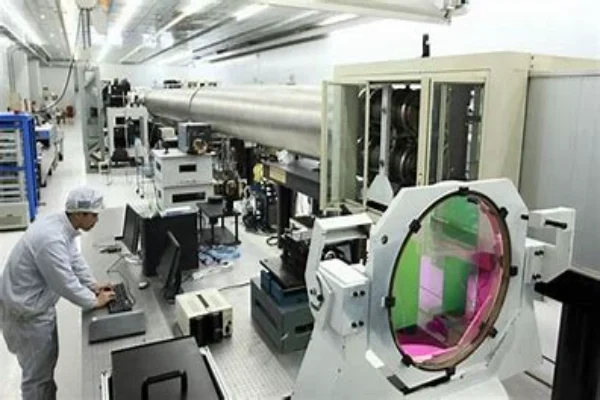
Cost Implications: How Much Do LBO Crystals Cost?
The price of LBO Crystals varies based on several factors, including the size, quality, and manufacturing complexity. Despite being a premium product, their exceptional performance often justifies the investment.
Concluding
Navigating the world of LBO Crystals is as intriguing as it is insightful. Their unique properties and extensive applications serve as a testament to their growing importance in the field of optics and beyond. As we continue to harness the power of these remarkable crystals, one can only anticipate the extraordinary advancements they promise to bring in our future.


